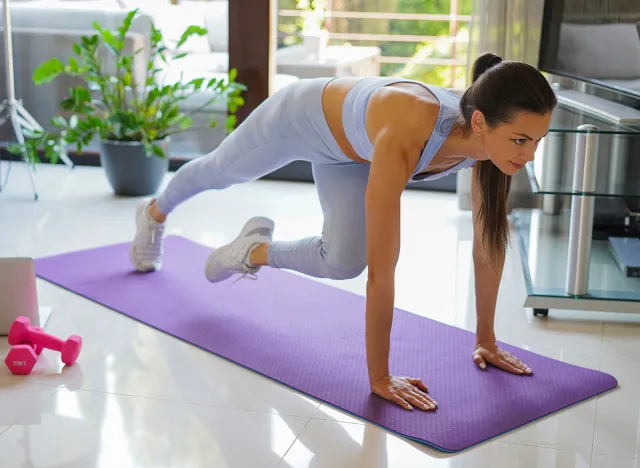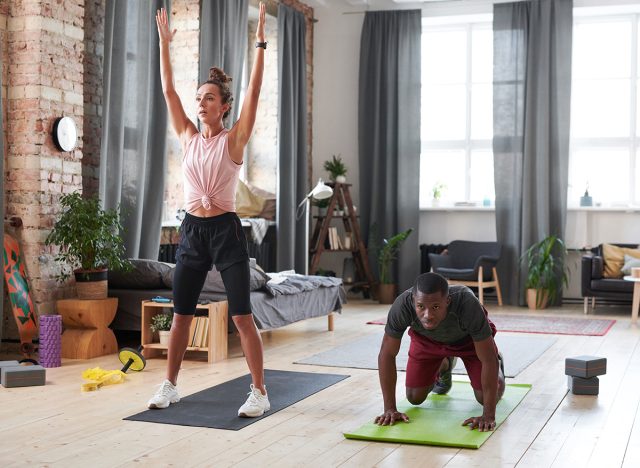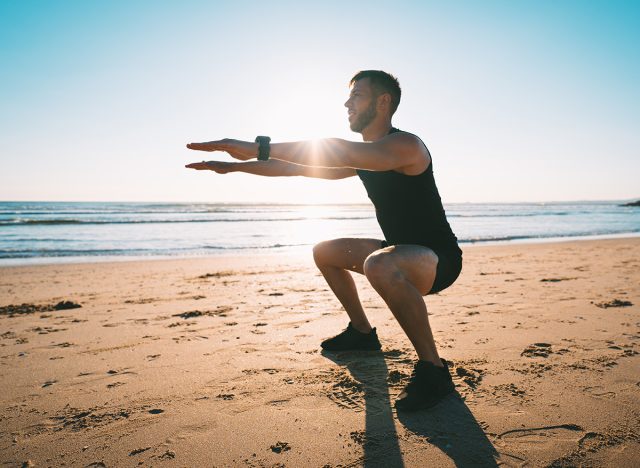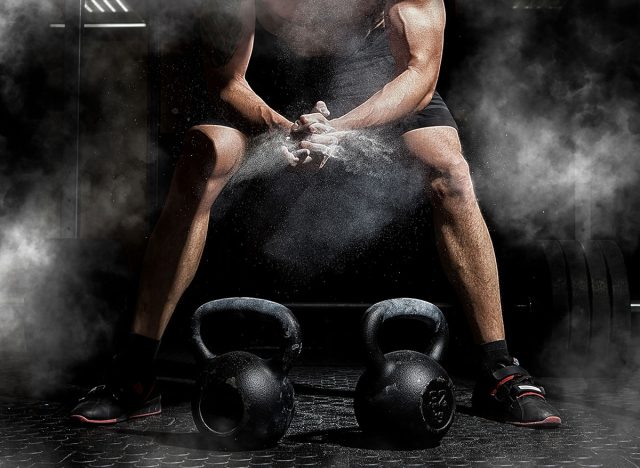5 Best Cardiovascular Exercises to Lose Body Fat

Choosing cardiovascular exercises to lose body fat might seem daunting, but with the right moves and guidance, it's entirely within reach. I'm Cara D'Orazio, a Certified Personal Trainer and Group Fitness Instructor with 19 years of experience, and I'm here to walk you through 5 cardiovascular exercises to lose body fat. My expertise spans strength training, barre, and Pilates, all designed to make fitness accessible and enjoyable.
That's why we'll explore effective exercises ranging from the dynamic mountain climber to the powerful kettlebell swing. These workouts are chosen for their ability to elevate heart rates, target key muscle groups, and optimize fat burning—perfect for integrating into your routine between weight training sessions. Whether you're a beginner, dealing with injuries, or simply looking for low-impact options, I've got you covered. My approach, recognized by Forbes and Women's Health, is about making sure you can "workout like nobody is watching," focusing on what feels right for you. Let's dive into these exercises and start you on the path to losing body fat today.
Mountain Climber

In the mountain climber exercise, start in a plank position with your wrists directly under your elbows and your elbows beneath your shoulders. Your body should form a straight line from head to heels, ensuring your neck aligns with your shoulders, which align with your hips, and your hips with your heels. Maintain your hips low and your legs straight.
To execute, you can either hop your knees in, alternating so that as your right knee comes forward, your left leg extends back, or for a low impact version, simply pull one knee in at a time, focusing on engaging your core. It's especially important for beginners or those with knee or lower back injuries to consider the low impact version to avoid strain. Performing mountain climbers effectively, even if only for one to two minutes at a time, can significantly enhance fat burning during strength training workouts.
Modified Burpee

The second exercise could be a modified burpee or a traditional full burpee. It's advised that beginners, those with injuries, or older individuals opt for the modified version to avoid strain.
For a traditional burpee, start standing, then place your hands on the floor and hop into a plank position—maintaining the plank form described in the mountain climber instructions. Then, hop back to a standing position. An optional pushup can be added while in the plank position before standing up, though this may not be suitable for everyone.
For the modified burpee, place your hands on the floor and step back into a plank instead of hopping. Here, you can perform a standard pushup or modify it by dropping to your knees, then step back to the starting position. This is the second exercise.
RELATED: 13 Strategies to Burn Body Fat Faster Than Ever Before, From a Champion Bodybuilder
Sumo Squat Jump

The third cardiovascular exercise is the sumo squat jump. Start with your feet wider than shoulder-width apart, toes slightly pointed outwards. Ensure your head aligns with your shoulders, shoulders with hips, and hips with heels, maintaining a wide stance. Squat down, bringing your hips to knee level or just above, ensuring weight distribution through your feet.
For the high-impact version, propel yourself upwards into a jump, landing softly on your toes, then balls of your feet, and finally your heels. If jumping is not feasible, rise onto your toes instead, resembling a calf raise at the peak of the movement, then lower back down, reloading through your feet at the squat's base.
Regular Squat Jump

The fourth exercise is a traditional squat jump, differing from the sumo squat jump by targeting the thighs and glutes more directly, as opposed to the sumo's focus on the inner thighs and glutes. Like the previous exercises, perform these until you reach fatigue—whether that's 20, 30, or more repetitions. These exercises are intended to elevate your heart rate and burn fat, especially when incorporated between weight training sessions.
Squat Jump

For the squat jump, position your feet parallel and hip-width apart, toes pointing forward. Initiate the movement by squatting down, ensuring your weight is on your heels. Your ankles should align with your knees, and your knees with your hips. You can squat down until your hips are nearly at knee level. Propel yourself upward into a jump from this position. For those unable to jump, rising onto the toes, similar to performing a calf raise, offers an alternative. Then, lower yourself back to the starting position.
RELATED: 11 Top Fitness Trends Right Now, According to an Industry Expert
Kettlebell Swing

The fifth cardiovascular exercise is the kettlebell swing, which can also be performed with a dumbbell if a kettlebell is unavailable. To adapt the grip for a dumbbell, place your thumbs atop the dumbbell head with your fingertips underneath, ensuring the dumbbell remains vertical—be cautious to maintain a secure grip to prevent it from flying out of your hands.
The kettlebell swing primarily involves a hip hinge rather than a deep squat. Begin with your feet parallel and hip-width apart. Instead of bending deeply at the knees, push your hips back, engaging in a hip hinge. This movement involves projecting your buttocks towards the back of the room. As you swing the kettlebell or dumbbell forward, thrust your hips forward, fully extending your hip flexors and squeezing your glutes at the top of the movement. The kettlebell or dumbbell should reach shoulder height. Continue this exercise until fatigue, which typically occurs after no more than 20 repetitions, especially with a heavier weight.
Cara D'Orazio is a Certified Personal Trainer and Group Fitness Instructor with 19 years of experience and the Owner of C.G.M. Fitness.




